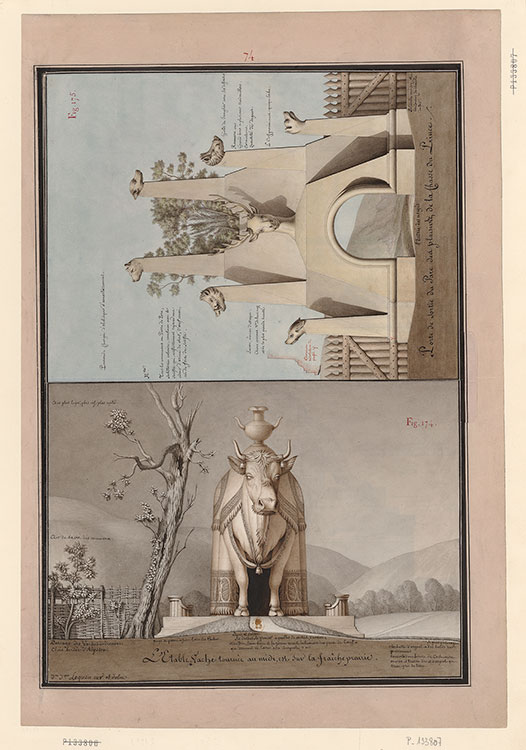
Lequeu tested the limits of architectural symbolism in these two designs where form follows function. The barn below is in the shape of a cow draped in a gold- and silver-studded Indian blanket. Its monumentalism and exotic connotations evoke the colossal plaster-and- wood elephant erected in the Place de la Bastille in Paris in 1813. The upper design depicts an entrance to a princely hunting reserve decorated with the heads of wild boar, deer, and hounds. It was intended to be sculpted in “pork stone,” a mix of limestone and sulfur that, according to the artist, diffused “an odor of cat urine . . . [or] rotten egg.”
Jean-Jacques Lequeu (1757–1826)
Cow Barn and Gate to the Hunting Grounds, from Civil Architecture, ca. 1815
Pen and black ink, brown and gray wash, watercolor
Bibliothèque nationale de France, Departement des Estampes et de la photographie
